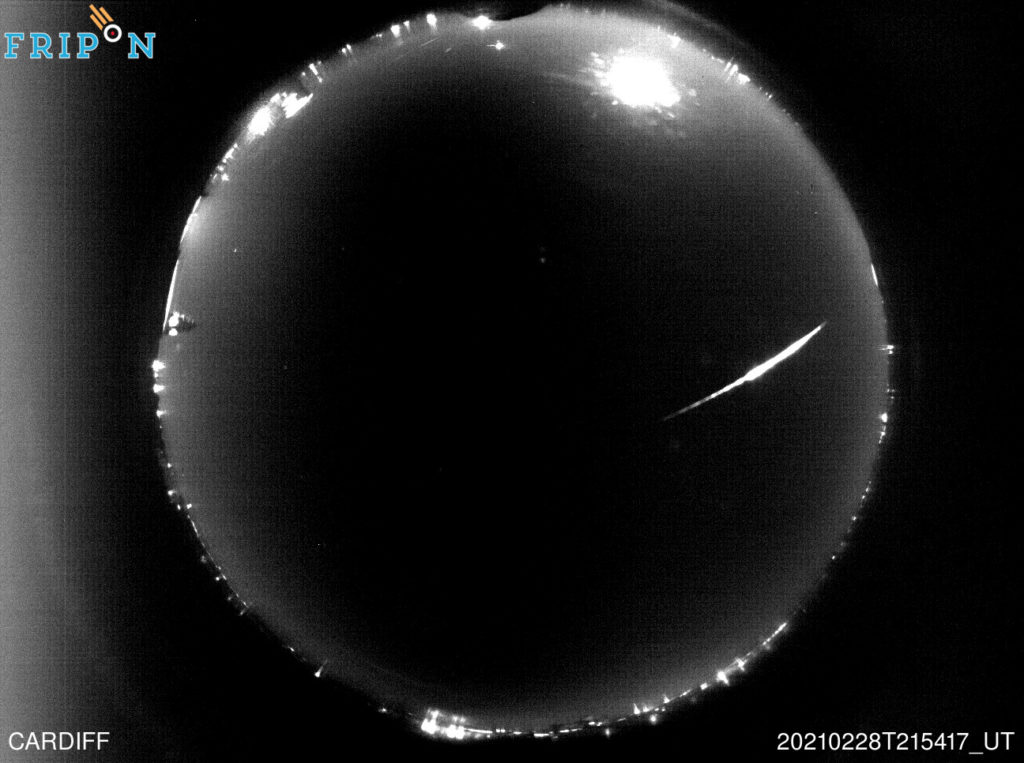On February 28, 2021, at 21h 54min UT, a very bright (mag. -9) fireball was widely observed and recorded over the UK: more than 1100 witnesses reported their observation to the IMO (International Meteor Organization) and UKMON (UK Meteor Observation Network) via the Online Fireball Report Form. In parallel, numerous cameras from UKFall (UK Fireball Alliance, video below) network and Fripon (Fireball Recovery and InterPlanetary Observation Network, Figure 1), as well as amateur footages allowed to calculate the potential impact zone where surviving meteorites could be found.

300 grams of extremely rare carbonaceous chondrite fallen on a driveway
And it’s not far from this area, the day following the fireball appearance, that meteorites were found lying on a driveway in the small Cotswold town of Winchcombe (Gloucestershire). The family who discovered it even heard it falling in real time, but could not immediatly look for it due to darkness. Almost 300g of this very fresh meteorites were fast collected and sent to the Natural History Museum in London (Figure 2). And here comes the surprise: this dark and fragile meteorite is a carbonaceous chondrite, an extremely rare fall, and the first one of this type ever recovered in the UK (and the first meteorite found in 30 years in the UK)!

A meteorite similar to Ryugu samples from Hayabusa 2
This kind of meteorite is known for containing organics and amino acids, which are elementary bricks of life coming from the origins of the Solar system, 4.6 billions years ago. Freshness and composition of what is likely to become the Winchcombe meteorite makes it comparable to the 5.4g of (162173) Ryugu asteroid collected by Hayabusa 2 mission (Jaxa) and which returned to the Earth last December. Trajectory analyses by Fripon shows the meteoroid came from the external parts of the asteroid belt, between Mars and Jupiter (Figure 3).

Useless to say further analyses should bring new information related to this exceptional rock. Stay tuned!




 You saw something bright and fast? Like a huge shooting star? Report it: it may be a fireball.
You saw something bright and fast? Like a huge shooting star? Report it: it may be a fireball.  You counted meteors last night? Share your results with us!
You counted meteors last night? Share your results with us!  You took a photo of a meteor or fireball? You have a screenshot of your cam? Share it with us!
You took a photo of a meteor or fireball? You have a screenshot of your cam? Share it with us!  You caught a meteor or fireball on video? Share your video with us!
You caught a meteor or fireball on video? Share your video with us!